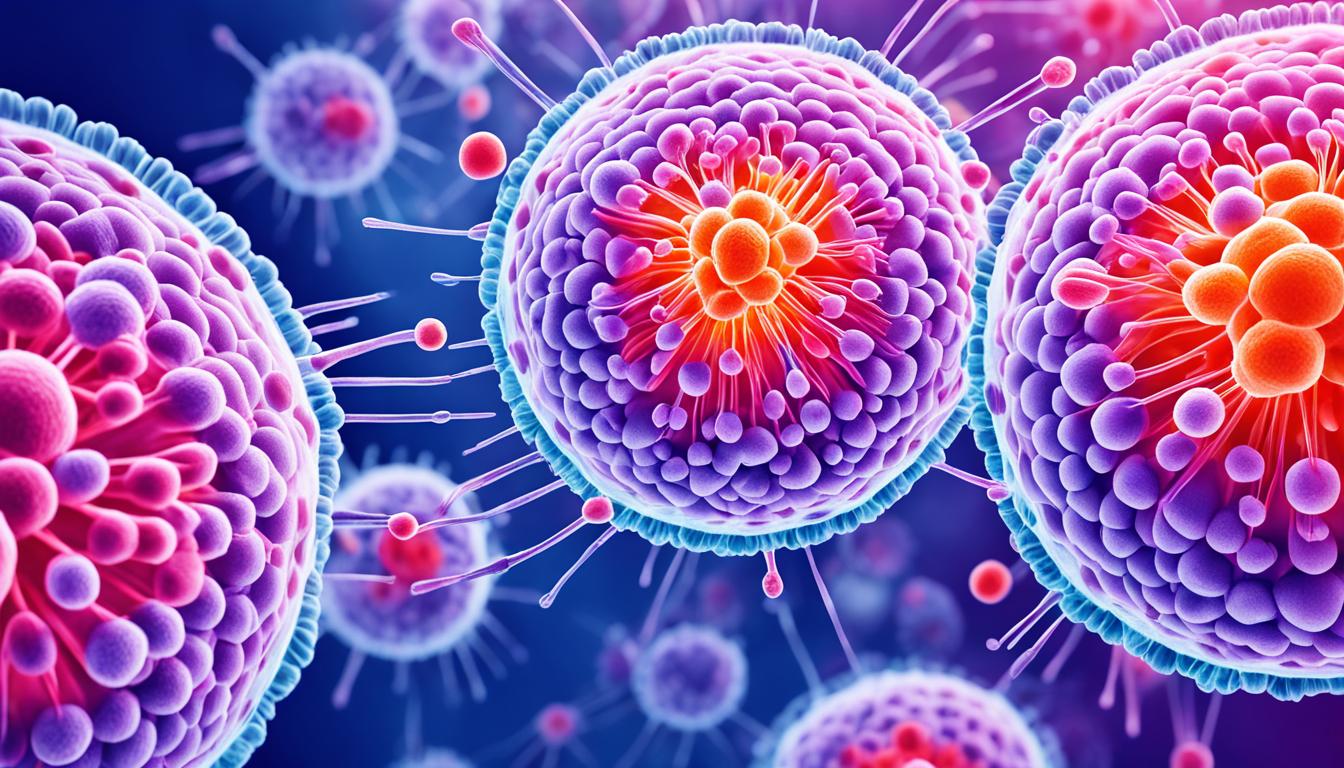Hypermenorrhea is when a woman has very heavy or prolonged menstrual bleeding. This condition can make everyday life hard. It’s often caused by things like hormonal problems, uterine fibroids, or endometriosis.
To diagnose hypermenorrhea, doctors look at your medical history and do a physical exam. They may also use ultrasound or MRI tests. Treatment options include pills and surgeries. But, stem cell therapy is bringing new hope for managing this condition.
In Thailand, advanced stem cell treatments are helping women with hypermenorrhea.
Key Takeaways:
- Hypermenorrhea is a condition characterized by heavy menstrual bleeding.
- The causes of hypermenorrhea can include hormonal imbalances, uterine fibroids, endometriosis, and certain blood disorders.
- Diagnosis involves a thorough medical history, physical examination, and imaging tests.
- Treatment options range from hormonal medications to minimally invasive procedures like endometrial ablation.
- Stem cell therapy is an emerging treatment approach for hypermenorrhea.
Symptoms of Hypermenorrhea
Hypermenorrhea, or heavy menstrual bleeding, affects many women. Knowing its symptoms is key for early detection and proper care. Watch out for these main signs:
- Heavy menstrual bleeding: The main sign is lots of blood that lasts longer than normal. You might need to change your pad or tampon every hour.
- Passing large blood clots: You might see big blood clots during your period. These happen because of the heavy flow.
- Increased frequency of changing menstrual protection: Needing to switch tampons or pads more often is a clear sign. This change happens due to the heavy flow.
- Fatigue or weakness: Anemia from the heavy bleeding can make you feel tired and weak.
- Pelvic pain or pressure: You might also feel pain or pressure in your pelvis. This happens because of more blood flow and your uterus contracting harder.
- Prolonged or irregular menstrual cycles: Your periods might become irregular or last longer than usual. Such changes are common in hypermenorrhea.
If you think you have hypermenorrhea, see a doctor. They can diagnose your condition and suggest treatments that fit your needs.
Causes of Hypermenorrhea
Hypermenorrhea means heavy menstrual bleeding. There are many reasons why it happens. It’s important to know these reasons for the right diagnosis and treatment. Some causes are:
1. Uterine Fibroids
Uterine fibroids are growths in the uterus that aren’t cancerous. They typically cause heavy bleeding, long periods, and pain. These fibroids can be small or large, and their presence is linked to hormonal issues. Treatment options include meds, non-invasive procedures, and surgery.
2. Endometriosis
Endometriosis happens when the uterus lining grows outside. It leads to heavy bleeding, severe pelvic pain, and problems getting pregnant. Treatments for this condition can involve hormones, pain relief, and surgery.
3. Hormonal Imbalances
Having too much estrogen or too little progesterone can mess up your cycle and cause heavy periods. Conditions like PCOS, thyroid problems, and some meds can lead to this. Restoring hormonal balance through meds or hormone therapy helps manage the bleeding.
4. Blood Disorders
Some blood problems make you more likely to get hypermenorrhea. Diseases that affect blood clotting, like von Willebrand, can cause too much bleeding. Treating these issues includes using meds and closely watching for symptoms of heavy bleeding.
It’s crucial for doctors to evaluate and diagnose hypermenorrhea correctly. This leads to treatments that specifically target the root causes of the heavy bleeding.
| Cause of Hypermenorrhea | Description |
|---|---|
| Uterine Fibroids | Non-cancerous growths in the uterus that can lead to heavy menstrual bleeding. |
| Endometriosis | Condition where the tissue lining the uterus grows outside of it, causing heavy bleeding. |
| Hormonal Imbalances | Fluctuations in hormone levels, such as excess estrogen or progesterone deficiency, disrupting the menstrual cycle. |
| Blood Disorders | Conditions like von Willebrand disease or platelet function disorders that affect blood clotting, leading to excessive bleeding. |
Treatment for Hypermenorrhea
The treatment for hypermenorrhea varies by its root cause and symptom intensity. Many treatment options exist to ease heavy menstrual periods.
Hormonal medications, like birth control pills or hormonal IUDs, are one path. They can make your period regular and lighter by adjusting your hormone levels. These can help with pain and lessen bleeding.
If these medicines are not enough, minimally invasive procedures might be the next step. For example, endometrial ablation removes or destroys the uterus lining. This lowers the heavy flow. Removing fibroids through hysteroscopic resection also reduces bleeding.
Stem cell therapy is a new option for those looking for something different. It uses stem cells to help the uterus heal and lower inflammation. In Thailand, advanced stem cell treatments are available for hypermenorrhea.
Those with hypermenorrhea should talk to their doctors about all treatment options. Finding the best plan for your specific case is key. A customized approach can reduce symptoms, better your lifestyle, and provide lasting relief.

